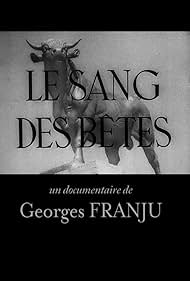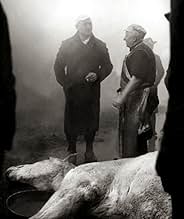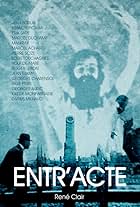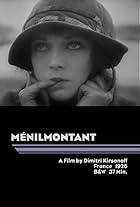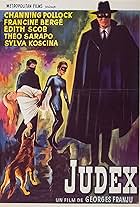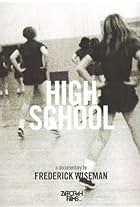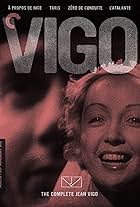IMDb RATING
7.7/10
2.7K
YOUR RATING
Bucolic scenes from the outskirts of Paris are contrasted with stark footage from slaughterhouses.Bucolic scenes from the outskirts of Paris are contrasted with stark footage from slaughterhouses.Bucolic scenes from the outskirts of Paris are contrasted with stark footage from slaughterhouses.
Photos
- Director
- Writers
- All cast & crew
- Production, box office & more at IMDbPro
Storyline
Did you know
- TriviaWas awarded the "Grand Prix International du Court Sujet" in 1950.
- ConnectionsFeatured in Cinéma, de notre temps: Georges Franju, le visionnaire (1996)
Featured review
Luis Buñuel was Georges Franju's favorite filmmaker. Now imagine the shocking eyeball- slicing scene of "Le Chien Andalou" (which, as you may well know, was a dead sheep's eyeball) taken to the goriest consequences: Franju takes his camera to a slaughterhouse in the outskirts of post-war Paris, and the appalling scene from Buñuel & Dali's classic feels like child's game compared to what is shown in this short documentary.
Here, we see -- in all horrifying details, truth and gore -- horses, cows, calves and sheep being matter-of-factly, bureaucratically slaughtered by dexterous butchers with axes, knives, hammers, and they don't even stop their smoking or casual whistling while doing their jobs. Among these indelible, nauseating scenes, we see an employee "caressing" a horse's head seconds before fatally puncturing its skull; the Berkeleyish "chorus line ballet" of decapitated sheep's paws; the still convulsive trunk of one decapitated, blood-drained, paw-less calf; and the gallons of steaming blood serving as an "illustration" of Charles Trenet's famous song "La Mer" ("The Sea"), heartily sung by one of the workers. In "Le Sang des Bêtes" you will see probably the most horrifyingly graphic scenes EVER filmed.
This film brings uncomfortable thoughts: on the one hand, how most of us -- consumers -- implicitly condone with this methodical, "impersonal" slaughtering of domestic, harmless creatures as long as we don't think very much about how meat, leather, soaps, etc "magically" appear at the supermarket or in a store. On the other hand, we wonder how butchers and other slaughterhouse workers manage to sublimate guilt, compassion and repulsion in a totally matter-of-fact, professional manner (they have to earn a living), proving how human beings can adapt to almost ANY circumstance (surely then-recent WW2 Nazi horror in concentration camps is very clear reference in "Le Sang...:").
"Le Sang..." features as an extra on the DVD that brings Franju's horror masterpiece "Les Yeux Sans Visage" (1959) and it's totally apropos: it's a perfectly macabre pas-de- deux. Impossible not to link the cold-hearted slaughter and skinning of the animals in "Le Sang..." with high-brow-gone-berserk surgeon Pierre Brasseur face-skinning his helpless victims with flawless craftsmanship in "Les Yeux". (Once again, the Nazi concentration camp "scientific" experiments are paralleled).
This is compulsory viewing for animal-rights activists and environmentalists. Don't even think of watching "Le Sang des Bêtes" if you're faint-hearted or after a meal; and beware you meat-eaters, this one may turn you in a vegetarian or at least make your next hamburger taste REALLY bad.
Here, we see -- in all horrifying details, truth and gore -- horses, cows, calves and sheep being matter-of-factly, bureaucratically slaughtered by dexterous butchers with axes, knives, hammers, and they don't even stop their smoking or casual whistling while doing their jobs. Among these indelible, nauseating scenes, we see an employee "caressing" a horse's head seconds before fatally puncturing its skull; the Berkeleyish "chorus line ballet" of decapitated sheep's paws; the still convulsive trunk of one decapitated, blood-drained, paw-less calf; and the gallons of steaming blood serving as an "illustration" of Charles Trenet's famous song "La Mer" ("The Sea"), heartily sung by one of the workers. In "Le Sang des Bêtes" you will see probably the most horrifyingly graphic scenes EVER filmed.
This film brings uncomfortable thoughts: on the one hand, how most of us -- consumers -- implicitly condone with this methodical, "impersonal" slaughtering of domestic, harmless creatures as long as we don't think very much about how meat, leather, soaps, etc "magically" appear at the supermarket or in a store. On the other hand, we wonder how butchers and other slaughterhouse workers manage to sublimate guilt, compassion and repulsion in a totally matter-of-fact, professional manner (they have to earn a living), proving how human beings can adapt to almost ANY circumstance (surely then-recent WW2 Nazi horror in concentration camps is very clear reference in "Le Sang...:").
"Le Sang..." features as an extra on the DVD that brings Franju's horror masterpiece "Les Yeux Sans Visage" (1959) and it's totally apropos: it's a perfectly macabre pas-de- deux. Impossible not to link the cold-hearted slaughter and skinning of the animals in "Le Sang..." with high-brow-gone-berserk surgeon Pierre Brasseur face-skinning his helpless victims with flawless craftsmanship in "Les Yeux". (Once again, the Nazi concentration camp "scientific" experiments are paralleled).
This is compulsory viewing for animal-rights activists and environmentalists. Don't even think of watching "Le Sang des Bêtes" if you're faint-hearted or after a meal; and beware you meat-eaters, this one may turn you in a vegetarian or at least make your next hamburger taste REALLY bad.
Details
- Runtime22 minutes
- Color
- Sound mix
- Aspect ratio
- 1.37 : 1
Contribute to this page
Suggest an edit or add missing content

